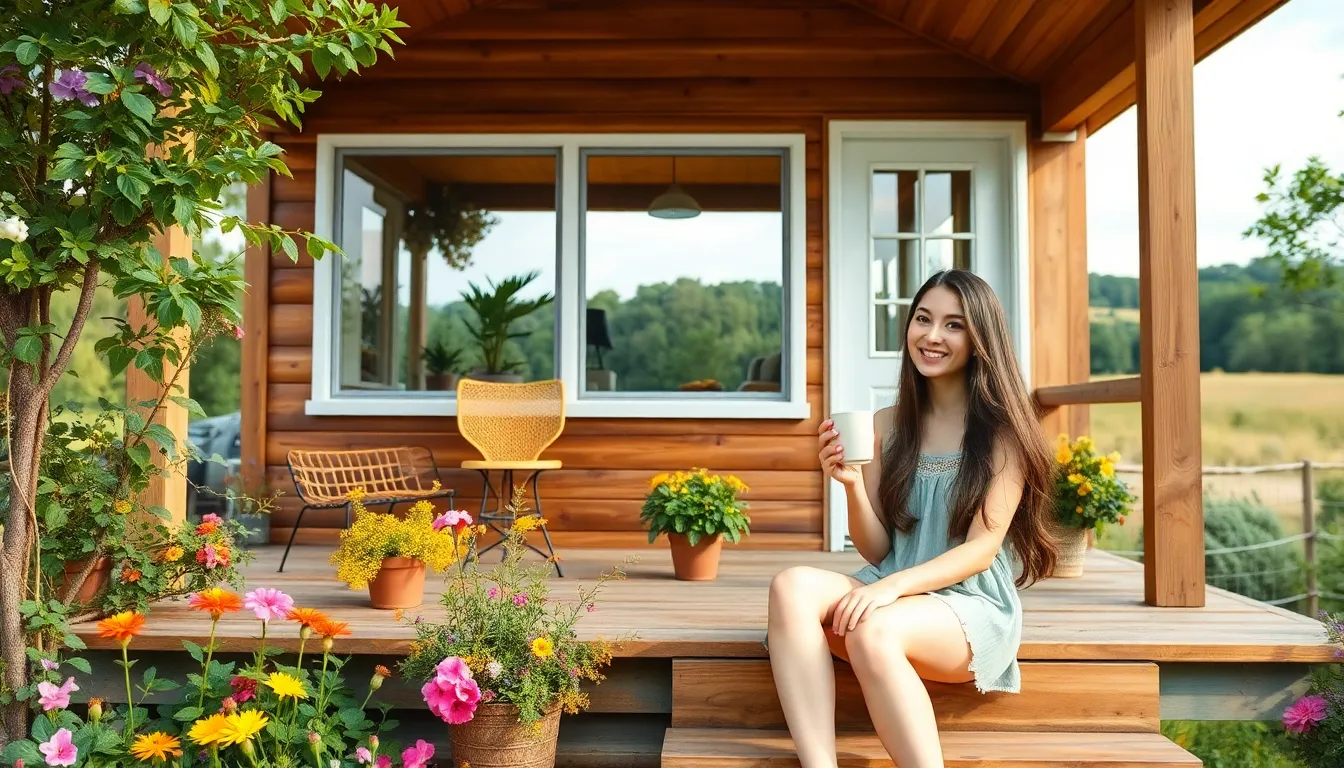Table of Contents
ToggleAs the golden years approach, many find themselves pondering the perfect living situation. Enter the tiny home—a cozy, efficient, and surprisingly chic option for the elderly. Imagine trading a sprawling mansion for a snug little haven where every square foot is optimized for comfort and convenience. Who knew that less could actually mean more?
Tiny homes offer not just a roof over one’s head but a vibrant lifestyle that fosters independence and community. With fewer maintenance headaches and lower costs, seniors can focus on what truly matters—enjoying life to the fullest. Plus, let’s be honest; who wouldn’t want to brag about living in a space that’s as cute as a button? In a world of oversized everything, tiny homes are the refreshing alternative that might just be the key to a happier, simpler life for the elderly.
Benefits Of Tiny Homes For The Elderly
Tiny homes offer numerous advantages tailored to the needs of seniors. These compact living spaces can significantly improve both quality of life and overall well-being.
Affordability
Affordability stands out as a primary benefit of tiny homes. Lower purchase prices and reduced utility bills create significant savings for elderly residents. Monthly expenses drop by up to 50% compared to traditional homes, allowing retirees to allocate resources elsewhere, such as healthcare or hobbies. Reduced property taxes also contribute to financial ease. Many seniors find that downsizing leads to fewer financial worries, fostering a sense of security.
Accessibility
Accessibility remains a crucial factor for elderly individuals. Tiny homes often feature single-level layouts, eliminating the need for stairs and reducing fall risks. Many designs incorporate wide doorways and open spaces, facilitating movement for those with mobility aids. Accessible kitchens and bathrooms further enhance convenience. Smart home technology can also be integrated easily, allowing seniors to maintain independence while controlling their environment. Prioritizing accessibility ensures comfort and safety, making tiny homes an excellent choice.
Design Considerations
Designing a tiny home for the elderly requires careful thought to create a safe and comfortable living environment. Prioritizing functionality and accessibility leads to a more enjoyable experience for seniors.
Safety Features
Safety features play a crucial role in ensuring peace of mind. Non-slip flooring reduces fall risk, and grab bars in key areas provide necessary support. Adequate lighting enhances visibility, while emergency alert systems enable quick access to help. Design elements should include wide doorways and low thresholds to accommodate mobility aids. Additionally, a user-friendly layout minimizes hazards, promoting independence and securing a worry-free environment.
Space Efficiency
Space efficiency maximizes comfort and usability. Open floor plans create a spacious feel while allowing movement without obstacles. Smart storage solutions, such as built-in shelves and multi-functional furniture, help keep essentials within reach. Compact appliances provide convenience without sacrificing functionality. Every inch should serve a purpose, ensuring that the home remains practical and organized, supporting a simplified lifestyle for seniors.
Popular Tiny Home Styles
Tiny homes come in a variety of styles, catering to the unique needs of elderly residents. These options offer flexibility and comfort while emphasizing simplicity.
Prefabricated Models
Prefabricated tiny homes provide quick and efficient solutions for seniors. These structures come ready-made, allowing for rapid setup. Efficient designs optimize space and include essential features like accessible layouts and ample storage. Notably, brands such as Tumbleweed and PREFIX offer models specifically tailored for aging individuals, ensuring safety and convenience. These homes often incorporate smart technology, enhancing comfort and security, making them ideal for elderly residents.
DIY Options
DIY tiny homes allow seniors to customize their living spaces according to specific preferences. Building a tiny home gives individuals control over design choices, enabling them to create layouts that suit their mobility needs. Many resources, including online communities and instructional guides, offer support for those interested in this project. Local workshops can provide hands-on learning experiences, aiding seniors in building their dream homes. Furthermore, incorporating personal touches can promote a sense of ownership, contributing to overall satisfaction in their new living environment.
Community Living
Community living in tiny homes creates opportunities for seniors to engage with others while enjoying a simplified lifestyle. These communities foster connections that enhance well-being and encourage active participation in daily activities.
Benefits Of Tiny Home Communities
Tiny home communities offer social interaction through shared spaces and group activities. Residents often bond over gardening, crafts, or community meals, strengthening friendships and reducing feelings of isolation. They also promote healthy lifestyles, as walking paths and communal areas encourage physical activity. Affordability stands out, with lower living expenses allowing seniors to allocate funds toward social events or hobbies. Safety and security frequently rank high, as many tiny home communities feature gated entrances and surveillance, ensuring peace of mind for residents.
Support Systems for Seniors
Support systems within tiny home communities provide essential resources for elderly residents. Many communities offer access to on-site healthcare services, ensuring prompt care for health issues. Assistance with daily activities is often available, ranging from meal preparation to housekeeping. Residents appreciate having transportation services for appointments or outings, facilitating mobility. Additionally, social support groups exist to address common challenges, fostering a sense of belonging among peers. Engaging with neighbors contributes to a supportive network, creating a safe and nurturing environment that promotes independence.
Tiny homes offer a refreshing and practical solution for seniors seeking a comfortable and independent lifestyle. With their focus on affordability accessibility and community engagement these compact spaces are designed to meet the unique needs of elderly residents. The benefits of downsizing extend beyond financial savings to include enhanced safety and a sense of belonging within supportive communities.
As more seniors embrace the tiny home movement they discover that these charming dwellings can lead to a fulfilling and vibrant life. By prioritizing comfort and convenience tiny homes truly represent a modern approach to aging gracefully.



